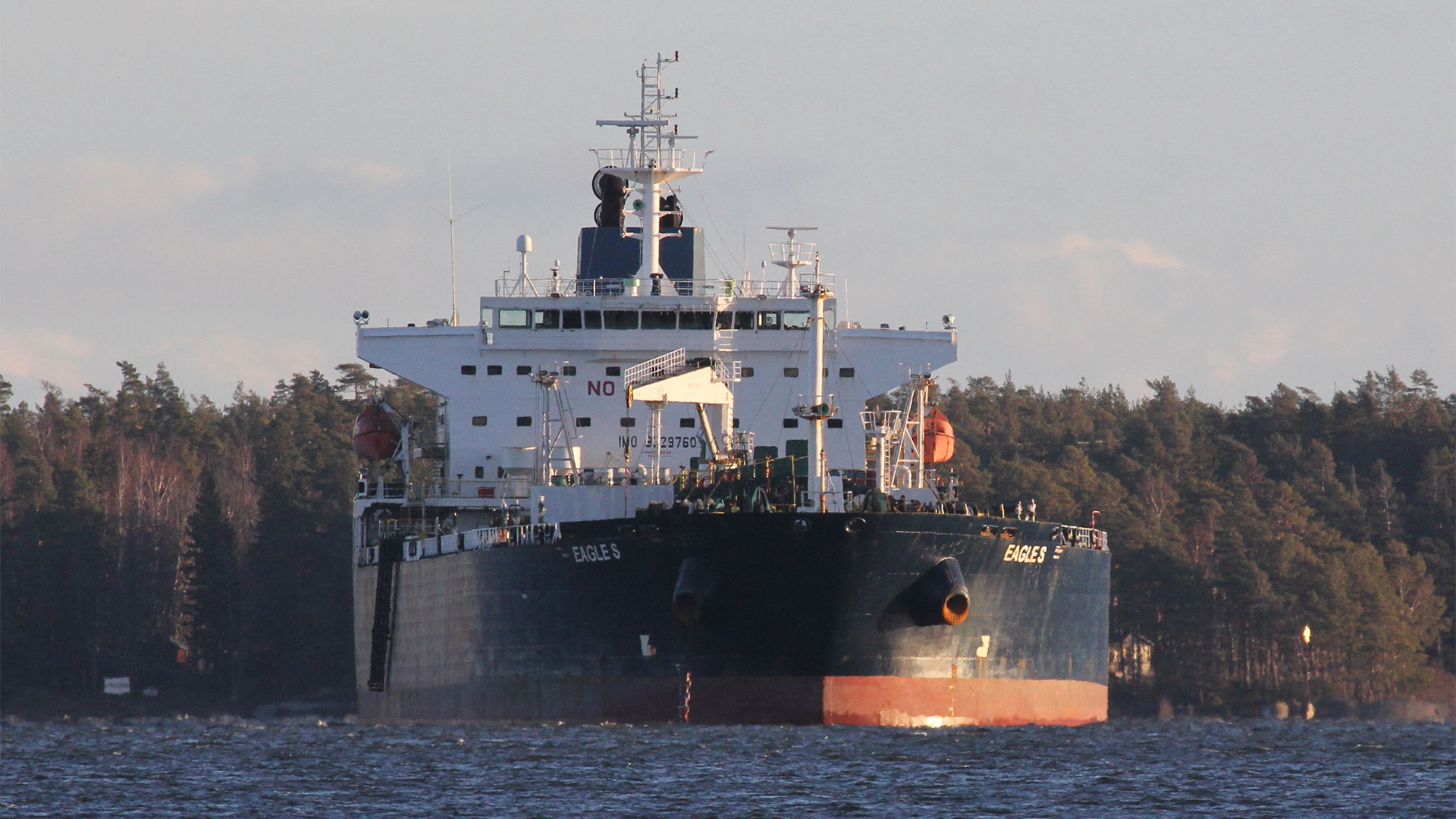Crew of Russian 'shadow fleet' tanker charged with intentionally sabotaging undersea cables — Finnish authorities claim ship dragged its anchor 56 miles along the sea floor, causing $70 million in damage to five cables
But questions about Finland's jurisdiction in the waters where the tanker was caught dragging its anchor could prove pivotal to a successful prosecution.

Crew members of the Eagle S oil tanker have been charged with “aggravated sabotage and aggravated interference with telecommunications” by Finnish authorities, reports The Guardian. Specifically, the captain, first, and second officers of the Eagle S are now in trouble with the long arm of Finnish law, over allegations they intentionally damaged five undersea cables by dragging their ship's anchor across the sea floor for over 50 miles.
Late last year, this oil tanker, thought to be operating as part of the Russian ‘shadow fleet,’ was suspected of being behind some high-profile internet cable sabotage that occurred in the Baltic Sea. There was a flurry of such damage in late 2024, with European politicians talking about Russia being engaged in ‘hybrid warfare.’ The 'shadow fleet' designation indicates the tanker, registered in the Cook Islands, is understood to be a Russian vessel sailing under a foreign flag to evade sanctions.
Concerning the case of this particular vessel, some of you will remember our report late last year, when Finland’s National Bureau of Investigation (NBI) pointed the finger at the Eagle S. Its crew was suspected of being the culprit behind the severing of the Estlink 2 power cable, and several other internet and communications cables connecting Finland and Estonia, on Christmas Day 2024.
Investigators found evidence of “almost a hundred kilometers” of anchor dragging on a path followed by the Eagle S in the Baltic. The ship/crew was already facing legal trouble, under scrutiny for an aggravated arson charge and the aggravated regulation offense due to its (mis)handling of its oil cargo.
News that charges are now being filed by Finnish prosecutors suggests that sufficient evidence has been gathered to make such a legal maneuver worthwhile. Remember, Finnish border guards plus a police contingency boarded and seized the Eagle S on December 26.
The seized vessel was released from Finland's Svartbäck anchoring site in February 2025. However, the Guardian report says the three accused crew members have remained “under a travel ban in Finland.”
The jurisdiction question
When the case eventually hits trial, it is expected, from the pleas of the accused thus far, that there will be a strong debate about Finland’s jurisdiction outside its territorial waters. Lawyers for the suspects facing trial have already highlighted this legal wrinkle. However, Finnish prosecutors assert that “the effects of the crime materialized here in Finland,” thus bringing it to the jurisdiction of Finland. Moreover, two Finnish companies had to spend €60m (USD$70m) just to repair the damaged undersea cables.
Get Tom's Hardware's best news and in-depth reviews, straight to your inbox.
Finland’s geographic position, sharing a very long border with Russia and being highly reliant on undersea cabling for connections with Sweden, Estonia, and the Central European nations, makes the suspected Russian ‘Hybrid warfare’ seen here a particularly prickly topic.
Follow Tom's Hardware on Google News to get our up-to-date news, analysis, and reviews in your feeds. Make sure to click the Follow button.

Mark Tyson is a news editor at Tom's Hardware. He enjoys covering the full breadth of PC tech; from business and semiconductor design to products approaching the edge of reason.
-
bolweval they shouldn't have released the ship, they could have sold it to offset the cost of the damage...Reply -
bit_user Reply
Probably gets into the weeds of maritime law and risks retaliation in kind.bolweval said:they shouldn't have released the ship, they could have sold it to offset the cost of the damage...
However, I'd expect they would still pursue its owner for damages. Then, if the owner wants to sell the vessel to cover the costs, that's entirely up to them. -
Rob1C Reply
Sounds like they wouldn't be able to agree to pay, and then retaliate without cause.bit_user said:Probably gets into the weeds of maritime law and risks retaliation in kind.
However, I'd expect they would still pursue its owner for damages. Then, if the owner wants to sell the vessel to cover the costs, that's entirely up to them.
Seizing the ship and assets, waiting for it to work it's way through the courts, and both rolling with and retaliating against the punches is one of the ways forward; the other is to essentially do nothing.
You can hardly rely on voluntary repayment.
About the only valid point is that there's lots of opportunities to retaliate, and it's difficult to monitor all the locations. Hard to prove that it was deliberate; that's why seizing assets and tying them up in court is about all you can do.
You may lose more money, but it's a case of who can afford to lose the most; one can write off their loses, the other can not.
When one country is allowed to break sanctions and buy Russian oil they are keeping each other in advantage to the other countries who do not. That's another avenue where pressure can be applied.
Insights from Captain Obvious don't help, thinking outside the box is a well worn idea; but one that can work. -
trica If that could send down a drive or mini sub to take pictures and show the captain dragged the anchor for dozens of miles, that's a slam dunk that this damage was done on purpose. No ship drags a massive anchor for 50+ miles without noticing something is wrong, and beyond an emergency there is zero reason to drop anchor while the engines are still running.Reply -
cbrad3690 Reply
I thought the crude that was on board would have covered that expense.bolweval said:they shouldn't have released the ship, they could have sold it to offset the cost of the damage...